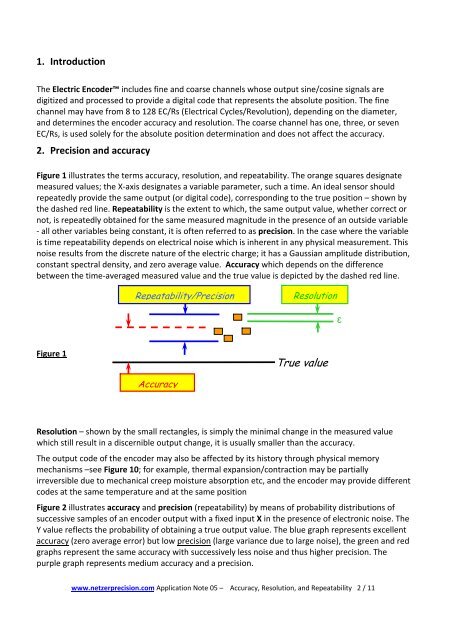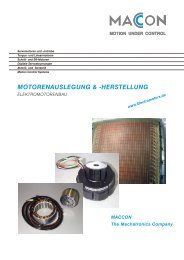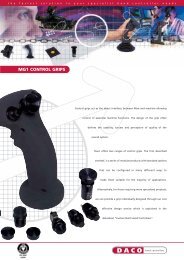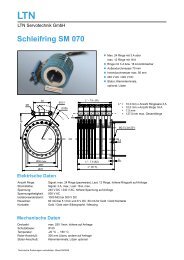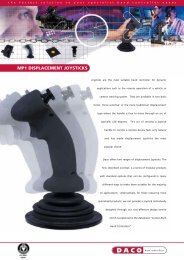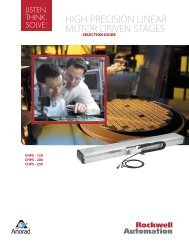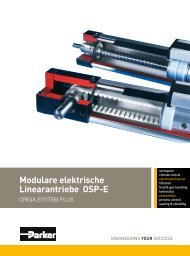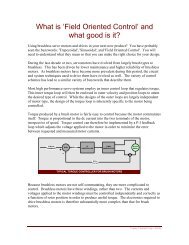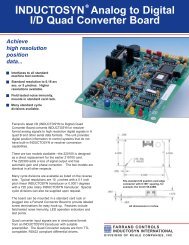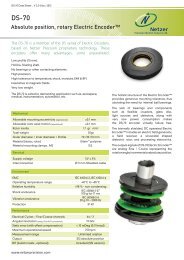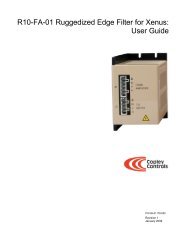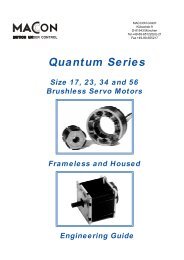AN-05;Accuracy, Resolution, and Repeatability - Netzer
AN-05;Accuracy, Resolution, and Repeatability - Netzer
AN-05;Accuracy, Resolution, and Repeatability - Netzer
- No tags were found...
You also want an ePaper? Increase the reach of your titles
YUMPU automatically turns print PDFs into web optimized ePapers that Google loves.
1. IntroductionThe Electric Encoder includes fine <strong>and</strong> coarse channels whose output sine/cosine signals aredigitized <strong>and</strong> processed to provide a digital code that represents the absolute position. The finechannel may have from 8 to 128 EC/Rs (Electrical Cycles/Revolution), depending on the diameter,<strong>and</strong> determines the encoder accuracy <strong>and</strong> resolution. The coarse channel has one, three, or sevenEC/Rs, is used solely for the absolute position determination <strong>and</strong> does not affect the accuracy.2. Precision <strong>and</strong> accuracyFigure 1 illustrates the terms accuracy, resolution, <strong>and</strong> repeatability. The orange squares designatemeasured values; the X‐axis designates a variable parameter, such a time. An ideal sensor shouldrepeatedly provide the same output (or digital code), corresponding to the true position – shown bythe dashed red line. <strong>Repeatability</strong> is the extent to which, the same output value, whether correct ornot, is repeatedly obtained for the same measured magnitude in the presence of an outside variable‐ all other variables being constant, it is often referred to as precision. In the case where the variableis time repeatability depends on electrical noise which is inherent in any physical measurement. Thisnoise results from the discrete nature of the electric charge; it has a Gaussian amplitude distribution,constant spectral density, <strong>and</strong> zero average value. <strong>Accuracy</strong> which depends on the differencebetween the time‐averaged measured value <strong>and</strong> the true value is depicted by the dashed red line.<strong>Repeatability</strong>/Precision<strong>Resolution</strong>εFigure 1True value<strong>Accuracy</strong><strong>Resolution</strong> – shown by the small rectangles, is simply the minimal change in the measured valuewhich still result in a discernible output change, it is usually smaller than the accuracy.The output code of the encoder may also be affected by its history through physical memorymechanisms –see Figure 10; for example, thermal expansion/contraction may be partiallyirreversible due to mechanical creep moisture absorption etc, <strong>and</strong> the encoder may provide differentcodes at the same temperature <strong>and</strong> at the same positionFigure 2 illustrates accuracy <strong>and</strong> precision (repeatability) by means of probability distributions ofsuccessive samples of an encoder output with a fixed input X in the presence of electronic noise. TheY value reflects the probability of obtaining a true output value. The blue graph represents excellentaccuracy (zero average error) but low precision (large variance due to large noise), the green <strong>and</strong> redgraphs represent the same accuracy with successively less noise <strong>and</strong> thus higher precision. Thepurple graph represents medium accuracy <strong>and</strong> a precision.www.netzerprecision.com Application Note <strong>05</strong> – <strong>Accuracy</strong>, <strong>Resolution</strong>, <strong>and</strong> <strong>Repeatability</strong> 2 / 11


